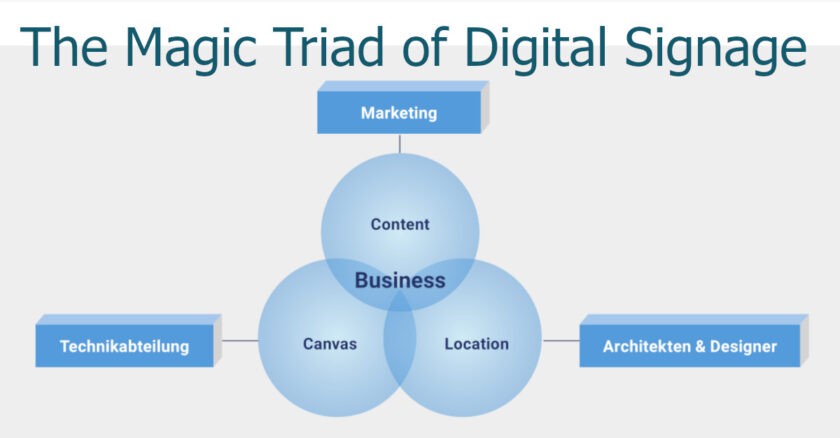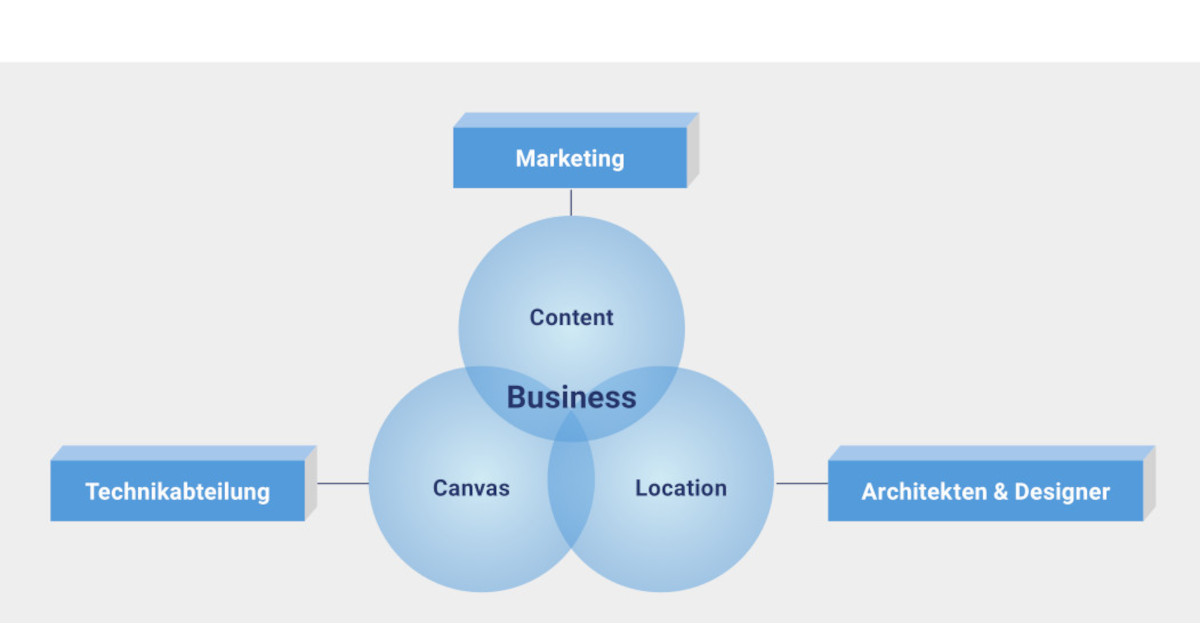Canvas, content and location: These three key factors need to be weighed up and combined when creating a holistic digital signage concept.
We have already explained the importance of content in the digital signage ecosystem here on invidis – and why a holistic concept is necessary for the most seamless customer experience possible.
And all this begins with a plan: In the concept stage, or experience design stage, you need to decide on the orchestration of your communication. Human decision processes can be very complex, and you should use the full spectrum of available means, digital or non-digital, to reach your audience. However, orchestration, i.e. a consistent messaging across all channels and along the customer journey, is key in this context. Otherwise, you might alienate your audience rather than engage with it.
Three key points for your concept
Orchestration is also key for your digital signage concept. Digital signage always has a physical and a digital aspect. Therefore, it has to be integrated both into your spatial design and into your digital communication context. This is already a challenge for single touchpoints that may exist in hundreds or thousands of different locations, but it becomes a fine art when you are combining several touchpoints in one location into a complex customer journey experience.
Take for example a flagship store where you create several digital touchpoints. Your customers’ expectation will be that they seamlessly work together and create a personal shopping experience for them, no matter if it is the shop window display, the ambient screen on the back wall, a highlight installation, an info terminal, or a service screen in the fitting room. And of course, it should also be “omnichannel”, i.e. seamlessly integrate into your online world.
When you create your concept and decide to use digital signage, there are three key things to balance out:
■ The canvas, i.e. the type of display
■ The location
■ The content
Let’s call this the Magic Triad of Digital Signage. It not only depicts the three main areas, but also the usual responsibilites of these areas within a project.

One of the big benefits of digital signage is its enormous flexibility in terms of creating canvases. Display types range from small electronic shelf labels (ESLs), over LCD or OLED Screens and LED walls, to large projections or even LED Media Facades. Each one of them has its own benefits and challenges – and price tags. But there is certainly one that suits your communication needs best. Just ask your tech team or your trusted integrator.
Your next consideration is location, i.e. where to place your canvas. This is the discipline where architects and designers come into play. They will be able to help you with viewing axes, spatial contexts, and integration into the overall design.
However, from a business perspective you should always have your purpose question in mind: What do you want to achieve in this specific location? Do you want to be, for example, as visible as possible and reach as many people as possible? So, go big and bright in the front of the space or on the back wall.
Content: Where the magic happens
The third component in your concept is content. Most people would agree that it is content that brings digital signage to life. It is the part that really creates the magic and the engagement. Unfortunately, when we do our site inspections around the world, we find more poorly crafted content – or even black screens – than brilliant examples. So in a third article, we will discuss what makes good digital signage content – and who takes care of it.


